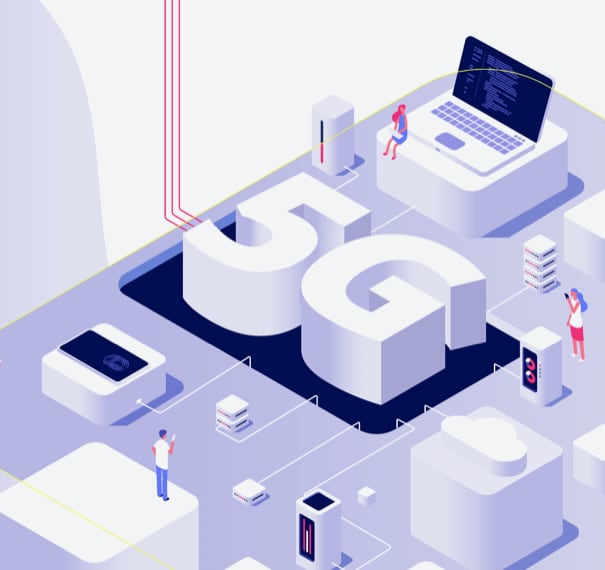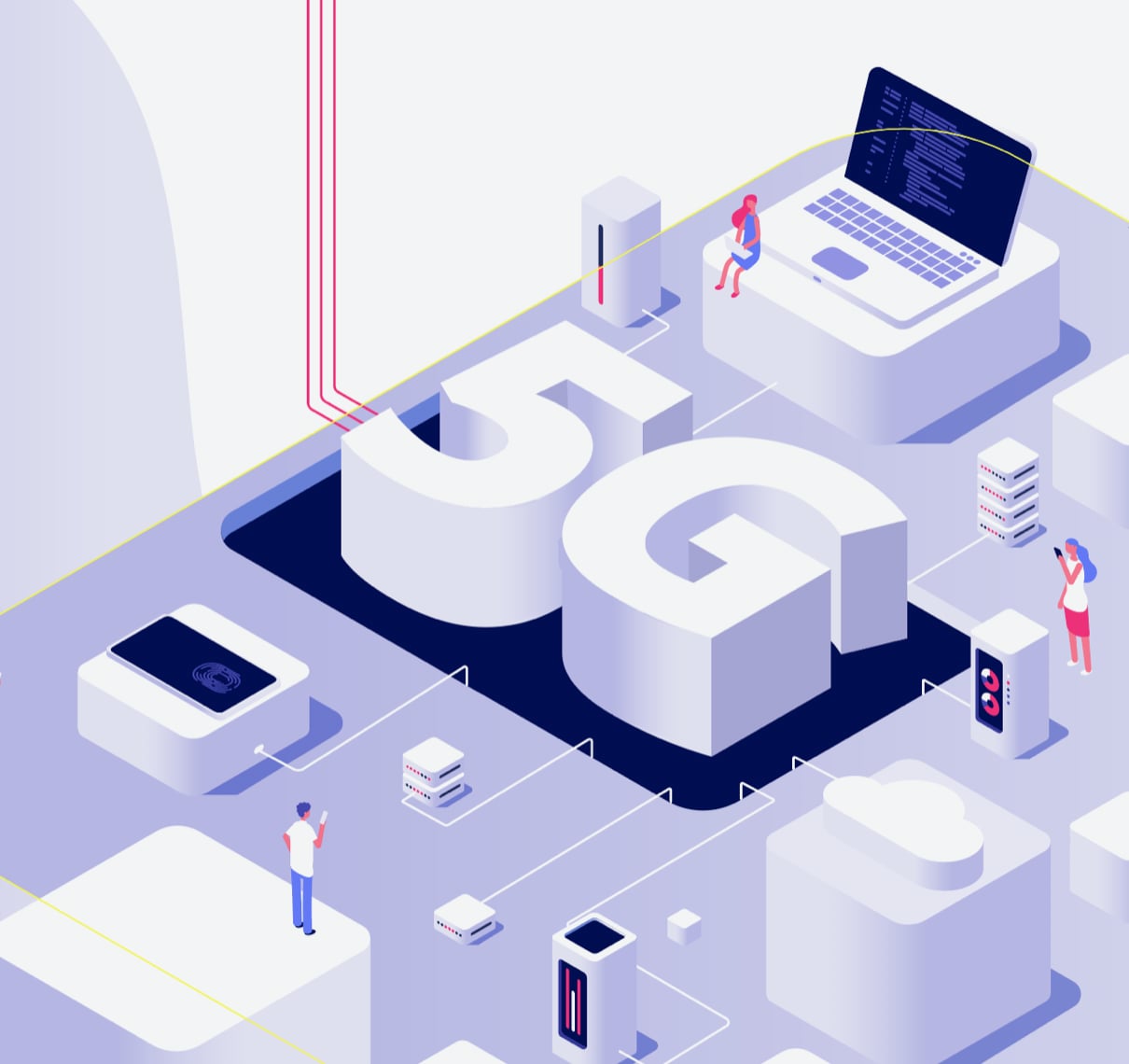
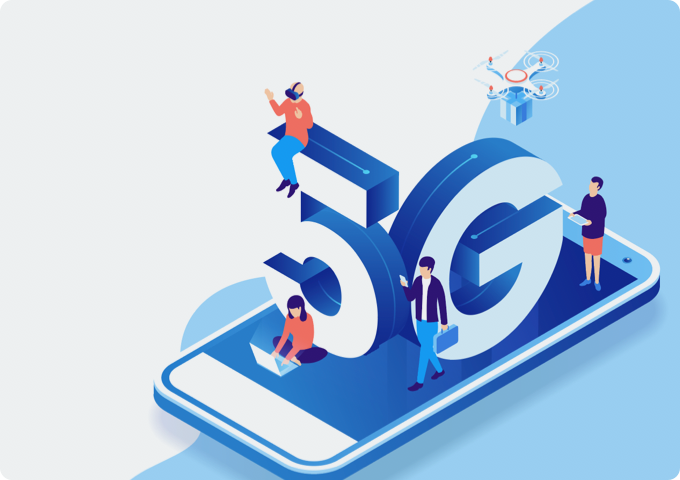
Summary
The proliferation of 5G will unleash a new paradigm not just in telecommunications, but life as we know. Hyperconnectivity and ambient intelligence will be the norm as the lines between digital and physical blur even more. The interplay of AI and 5G could tell us just how the story might play out and what its potential impact will be.
With the advancement of 5G, the telecommunications industry is gearing up for what might be its most significant development. Although it is some distance from mass adoption, 5G will be a critical driver of edge computing and distributed networks. This attribute makes 5G a force multiplier for technologies like IoT & industry 4.0, telemedicine, autonomous driving, and AR/VR, driving estimates to suggest that, globally, the networking industry will direct over $1 trillion towards 5G.ⅰ Let’s first look at the promise of 5G and the possibilities it creates. 5G has been around for some time, but it is now that the technology is gathering steam, with the GSMA suggesting that it could account for 20% of global connections, that’s 1.8 billion connections by 2025.ⅱ Besides supporting each of its application spaces – enhanced mobile broadband (eMBB), massive machine-type communications (mMTC), and ultra-reliable low-latency communications (URLLC) – with robust and customized frameworks, 5G will enhance the functioning of wireless devices reliant on fast data transfer capabilities, spawning a whole realm of possibilities in areas such as remote healthcare, agriculture, media and entertainment, industrial automation, smart factories and autonomous vehicles.
The potential of 5G, however, is also fraught with complexity. Albeit similar to previous connectivity-driven technology shifts, the rise of 5G will be the most substantial change in the history of telecommunications, making it essential for enterprises to understand what it will take to harness the potential of 5G. Intelligent technologies, specifically AI and RPA, are crucial to that process.
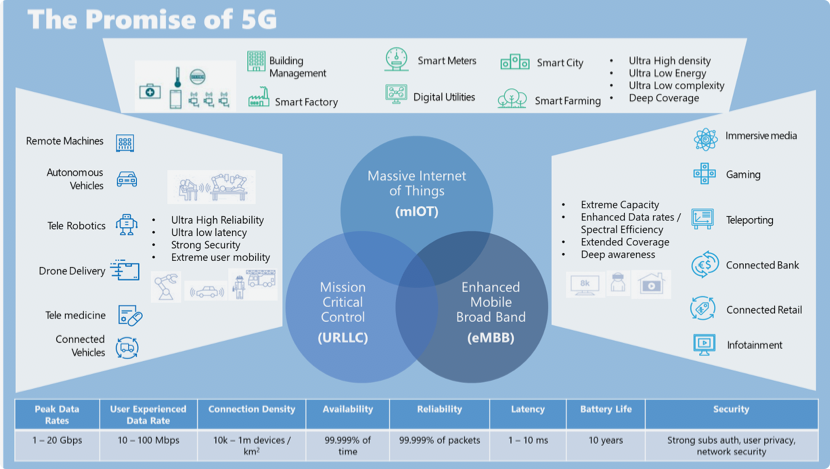
The Deal with Data
The proliferation of 5G will drive an explosion of data, both in volume and formats. Combine that with the need to provide powerful computing on the cloud and edge devices, and it becomes easy to see that organizations are dealing with a minefield just as much as they are with a gold mine. Consider the case of autonomous vehicles. In a V2X ecosystem, the central node, i.e. the autonomous vehicle, will communicate with its navigation and self-drive system, vehicle maintenance, the user, infrastructure, pedestrians, and even traffic systems using one of eMBB, mMTC, and URLLC, generating a massive and diverse dataset across touchpoints that needs to be correlated for variety of business use cases. In this scenario, an efficient and near real-time data management strategy is a precious asset. A comprehensive data management strategy to address this ‘Connected Data’ will require innovative and intelligent management solutions. Enterprises will need to support high speeds and virtually eliminate downtime while managing and directing data in various formats. It is here that automation and AI can play a significant role.
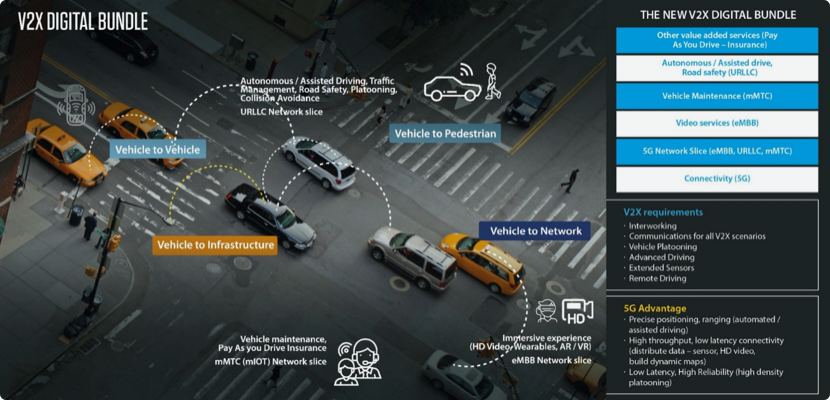
Managing Information with Intelligence
From network planning and infrastructure management to self-optimization and customer service, AI offers a range of use cases viable for service providers.ⅲ
Some of the key advancements in AI helps in these use cases,
-
Building AI – Computer Vision, Language Models, Deep Neural
-
Consuming AI – AI As A Service, Pre-trained contextual models
-
Network Planning and Network Performance Management
Network orchestration will be a challenge for several providers in the move realizing autonomous and self-organizing networks. AI-based techniques are very much needed to play key role network planning, orchestration and closed loop assurance, routing and network operations, fault analysis and recovery. Also, support end to end dynamic orchestration and management through Network As A Service across Telcos, Hyperscalers, Edge and Consumer Devices. Another key feature of AI and ML-driven orchestration and management is the scope for continuous improvement. Through intelligent technologies, enterprises can now drive supervised learning (traffic prediction, classification, slice source prediction), reinforcement learning (resource management), and unsupervised learning (optimizing end-user QoE and network security).
-
Better Customer Service
Through personalization, better network management, and data-driven insights, AI system will help network providers observe, analyze, and optimize customer experiences via automation with AI Bots. By predicting traffic and dynamically scaling capacity, AI can minimize downtime. For greater effectiveness, combining AI with automation could help providers make proactive adjustments or resource additions to the backhaul network, ensuring consistent service levels.
-
Digital Twins
The rapidity and consistency of 5G combined with cognitive techniques can help enterprises leverage the power of a digital twin in several ways. Digital twins can simulate and manage processes such as supply chain operations, optimize manufacturing processes through IoT devices, drive better customer service, and even help power entire organizations or network-based units such as smart cities.
-
Future Planning
We will only know the real impact of 5G once adoption reaches a critical mass. Enterprises should adopt a mindset of defining the trend to bring in agility and flexibility by design and not just following the status quo. Their ability to derive, process, and act on intelligent insights will determine their success in a new paradigm not just for the industry but also for society.
-
Security and Governance
The spike in connectedness and increased bandwidth create a problem of volume and speed for cybersecurity. Many of the current security frameworks may not be viable for a 5G worldⅳ, given the numbers of ways and mediums through which devices are connected. Security automation and intelligent, adaptive security management will need AI to ensure a protection framework capable of mitigating threats in 5G networks. Further, with the network opened up due to 5G, enterprises must have comprehensive data policies to ensure differential privacy, end to end security, governance, and compliance for data generated, processed and consumed by humans and machines.
Loved what you read?
Get practical thought leadership articles on AI and Automation delivered to your inbox


Loved what you read?
Get practical thought leadership articles on AI and Automation delivered to your inbox
Benefits of AI-driven Network Management
Using AI and automation offers a range of advantages to enterprises, not least the facility for continuous learning and improved security. There are substantial benefits from a business standpoint, too.
-
-
Enhanced Customer Experience and NPS
5G promises to supercharge digital experiences as we know them. Other areas like Immersive gaming, connected retail, innovative banking, infotainment, drone delivery, and telemedicine could also see widespread adoption over the next decade, redefining quality in customer experience as we know it today. With the added benefit of AI and intelligent automation, enterprises can expect to drive loyalty and improve NPS through their ability to create consistent customer delight.
-
Improved Network Utilization & Growth Capacity
AI and ML are already being used to optimize system resources, automatically scale capacity, detect anomalies, and offer predictive analytics in 5G distributed cloud layers.ⅴ Since the initial cost to buy and build 5G networks will be relatively high, with some estimates suggesting that global spending will touch $88 billion by 2023ⅵ, providers will look to reduce costs and improve performance to recoup these investments. It is no surprise that better resource utilization is one of the critical drivers of AI adoption in 5G.
-
Incident Prevention
The power of AI-driven predictive analytics and always-on maintenance will enable service providers to minimize disruptions, which is an even more crucial advantage given the critical functions that 5G will power. Reliability will be essential for adoption at scale and using intelligent technologies to ensure a seamless service could well be the catalyst for the proliferation of 5G.
-
Connectivity has driven the incredible advances in human history, and we might be on the cusp of the most extraordinary transition yet. As we have seen through what has been the most challenging year in recent memory, connectedness drives more than convenience and is essential to our functioning as a modern civilization. The marriage of AI and 5G offers the prospect of an ambiently intelligent world in a future brimming with unlimited potential. The stage is set for innovative enterprises capable of driving this new wave of industry. Is your organization ready?
References:
- https://www.analyticsinsight.net/the-intelligent-combination-of-5g-technology-and-artificial-intelligence/
- https://www.gsma.com/mobileeconomy/wp-content/uploads/2020/03/GSMA_MobileEconomy2020_Global.pdf
- https://www.ericsson.com/49b63f/assets/local/networks/offerings/machine-learning-and-ai-aw-screen.pdf
- https://ieee-wf-5g.org/ai-ml-track/#:~:text=AI%2FML%20is%20being%20used,on%20chatbots%2C%20recommender%20systems%2C%20and
- http://www.heavyreading.com/details.asp?sku_id=3568&skuitem_itemid=1789
- https://www.networkworld.com/article/3338100/using-ai-to-improve-network-capacity-planning-what-you-need-to-know.html


